Project News
2019-12-31
Monthly Report for December 2019
Project Monitoring Teams from JICA and JST
Between 15th and 21st December 2019, project monitoring teams from the Japan International Cooperation Agency (JICA) and Japan Science and Technology Agency (JST) visited Bhutan. The teams were to monitor the progress of the collaborative research between Japan and Bhutan, the use of the equipment, the facility invested in by the project and the state of capacity development. They were also to evaluate the results of the research to determine their impact on society in Bhutan, as of the midpoint of the project phase. Should they discover any issues, they were to suggest any potential solution to the project managers, such as improving the implementation process. The team members, interviewed with their Bhutanese counterparts, observed the examination facility inside the Bhutanese departments as well as the pilot site for the earthquake risk assessment.
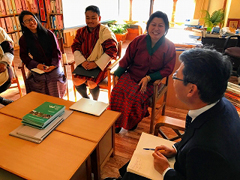 Interview with Bhutanese project counterparts by Dr Ishiwatari, JICA
Interview with Bhutanese project counterparts by Dr Ishiwatari, JICA
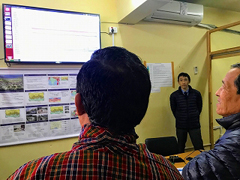 Dr Honkura and Mr Kabumoto with the JST team in the national earthquake observation room
Dr Honkura and Mr Kabumoto with the JST team in the national earthquake observation room
BBS Educational Programme Covered Tests
On 19th December 2019, the Department of Culture (DOC) carried out two series of tests, which were open to the media in Bhutan: a shaking table test and a static test. The shaking table test simulated a vibration, using real earthquake data observed in Thimphu, and moved two stone masonry buildings of the one-sixth scale, with and without retrofitting measures. Throughout the test, the DOC obtained data on how stone masonry structures respond to different vibrations, how strengthening interventions work, how far the interventions are sound, how the structure is damaged, and so on. On the other hand, the static test was to understand a real scale stone masonry house with reinforcement, which was pushed with hydraulic jacks, placed horizontally against its wall, Local and national media from newspapers and TV covered the tests. In particular, an educational programme by Bhutan Broadcasting Services (BBS), the Royal Tutorial Project, interviewed the project's engineers to make a scientific programme for senior high school students.
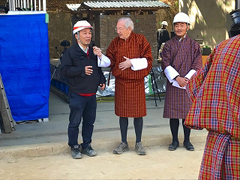 Interview with Prof Aoki by BBS
Interview with Prof Aoki by BBS
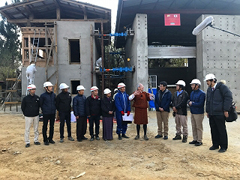 The Royal Tutorial Project
The Royal Tutorial Project
Scientific Seminar and the Fourth JCC
On 20th December 2019, the members of the project held a scientific seminar in Thimphu to report on the progress of the research. The seminar participants totalled 45 and were representatives from the disaster management sector such as the Ministry of Education, the Royal University of Bhutan, and UNDP. The Department of Geology and Mines (DGM) delivered a presentation on the geology and geodynamics of the Himalayas to highlight a typical earthquake scenario and presented the DGM's theories on seismic hazard analysis. The DOC, however reported on the progress of developing seismic technology for composite masonry buildings in Bhutan. After the seminar, the fourth Joint Coordinating Committee (JCC)meeting was held to discuss the way forward, in order to be able to share the project's findings with the people of Bhutan by the end of the project term in 2022.
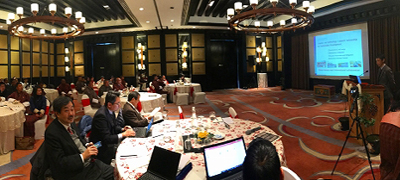 Scientific seminar: "Building Seismic Resilience in Bhutan using Science and Technology"
Scientific seminar: "Building Seismic Resilience in Bhutan using Science and Technology"
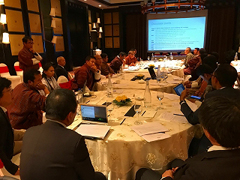 The JCC meeting
The JCC meeting
- About JICA
- News & Features
- Countries & Regions
- Our Work
- Thematic Issues
- Types of Assistance
- Partnerships with Other Development Partners
- Climate Change / Environmental and Social Considerations
- Evaluations
- Compliance and Anti-corruption
- Science and Technology Cooperation on Global Issues
- Research
- JICA Development Studies Program / JICA Chair
- Support for the Acceptance of Foreign HRs / Multicultural and Inclusive Community
- Publications
- Investor Relations
